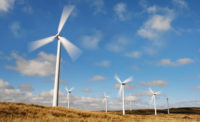Danfoss, a Bethpage, N.Y., manufacturer of high-efficiency electronic and mechanical components for air conditioning, heating, refrigeration and motion systems, announced plans to reduce its energy consumption by 50% and accelerate its leadership in the use of energy-saving and climate-friendly technologies in its buildings and operations worldwide by 2030.
Danfoss’ technologies are used to help reduce energy use and carbon emissions in the cooling of buildings, preserving food supply, optimizing industrial manufacturing and delivering clean, potable water.
“Worldwide, we deliver some of the most innovative and efficient technologies for saving energy, helping cities and companies to reach their targets,” says Niels Christiansen, president and CEO. “Now, we are intensifying our own efforts in the form of a new, ambitious climate strategy, which builds on what we have already done and achieved. We see this as a natural part of leading the way within the climate sector.”
Danfoss has already taken significant measures to help reduce the impact of its buildings and operations. Between 2007 and 2014, the company’s net sales increased by 55%, whereas its energy consumption, compared to sales, dropped by 29%. The savings are primarily obtained through the optimization and control of the buildings’ heating, air conditioning and ventilation systems using Danfoss’ own products.
Danfoss is also set to continue introducing renewable energy sources. In 2013, for example, Danfoss installed a solar cell park next to its Nordborg, Denmark, headquarters. In doing so, it produces electricity equal to the annual consumption of 400 single family houses and has a total capacity of 2 MW. Additionally, a 1-MW solar cell system was installed at Danfoss’ new campus in Chennai, India, last year, which has received the international LEED Platinum rating.



